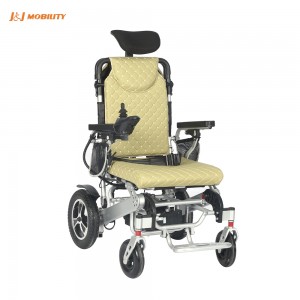The Invention and Impact of the Electric Wheelchair
Origins of the Wheelchair
The history of wheelchairs traces back to 1783 when John Dawson invented the Bath wheelchair. This early design laid the groundwork for future advancements in mobility aids. The evolution of the wheelchair continued significantly in the 19th century, culminating in the creation of the electric wheelchair in 1916, first used in London. This invention marked a major milestone in integrating technological innovation with human needs, revolutionizing the lives of countless individuals with disabilities and influencing societal awareness of barrier-free environments.
Purpose of Early Wheelchairs
Originally, wheelchairs were designed to aid individuals with limited mobility, providing a means to move independently. The earliest models, made of wood and leather in the 16th century, were basic devices intended to replace walking. These early wheelchairs were manually operated and evolved over time, transitioning from heavy wooden structures to lighter metal and plastic designs. This evolution reflects a broader trend toward improving usability and accessibility for people with disabilities. Today, wheelchairs symbolize the quest for independence and equality for people with disabilities.
Problems Solved by the Electric Wheelchair
Electric wheelchairs represent a significant advancement over traditional manual wheelchairs, addressing several key challenges:
Physical Effort and Fatigue: Manual wheelchairs require users to exert physical effort to move, which can be tiring and restrictive, particularly for those with limited upper body strength or specific medical conditions. Electric wheelchairs alleviate this problem by utilizing electric motors and rechargeable batteries, enabling users to navigate their surroundings with minimal physical exertion.
Enhanced Mobility: The advent of electric wheelchairs greatly improved mobility for users, allowing them to move more easily and independently. This innovation breaks down physical barriers, enhancing access to public spaces, buildings, and transportation systems.
Improved Quality of Life: By reducing physical strain and enhancing mobility, electric wheelchairs enable users to engage more actively in daily activities. This includes pursuing educational and employment opportunities, and participating in social interactions, all of which contribute to increased autonomy and self-confidence.
Future of Electric Wheelchairs
Despite significant advancements, the electric wheelchair industry continues to evolve. Future developments may include:
Intelligent Voice Control: Advanced voice control systems may allow users to operate their wheelchairs with simple vocal commands.
Autonomous Driving: Future models might feature autonomous driving capabilities, enabling the wheelchair to navigate obstacles and plan routes independently.
J&J Mobility is committed to staying at the forefront of these innovations, continuing research and development to push the boundaries of what electric wheelchairs can achieve.
In summary, the electric wheelchair represents a major breakthrough in mobility aids, addressing key limitations of manual wheelchairs and significantly enhancing the quality of life for users. As technology advances, the future promises even more sophisticated and personalized solutions for those with mobility challenges.
Post time: Sep-14-2024


